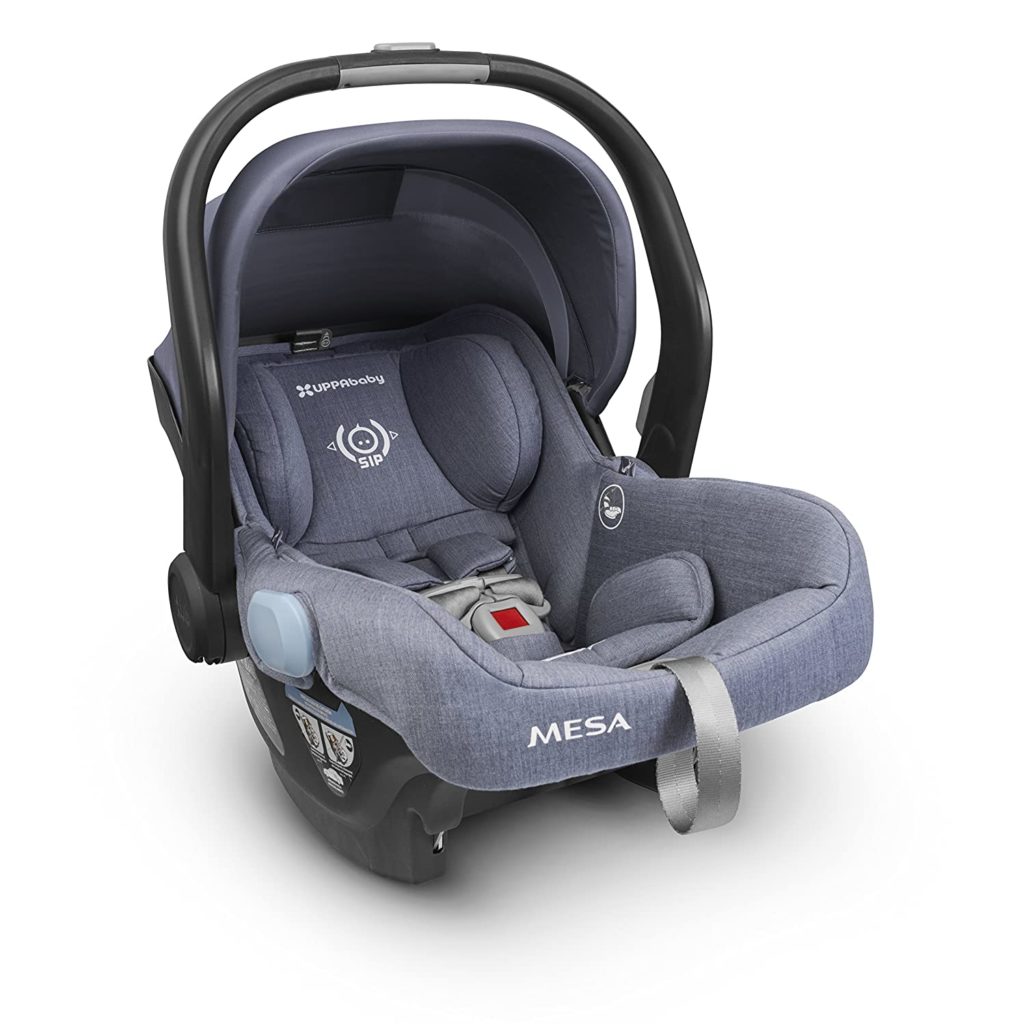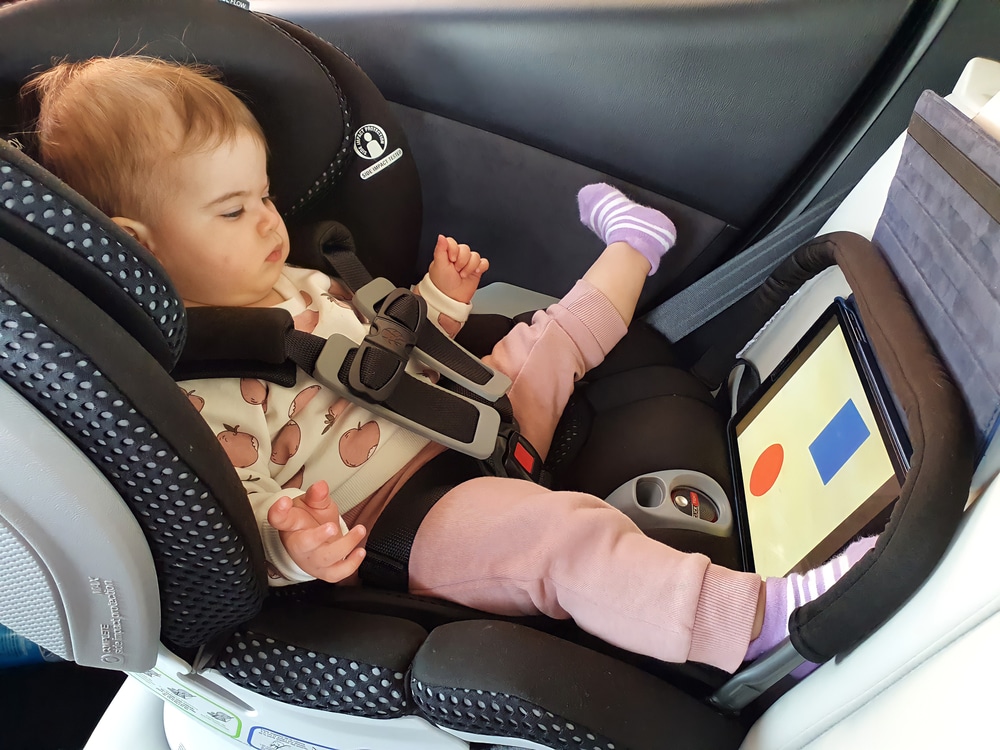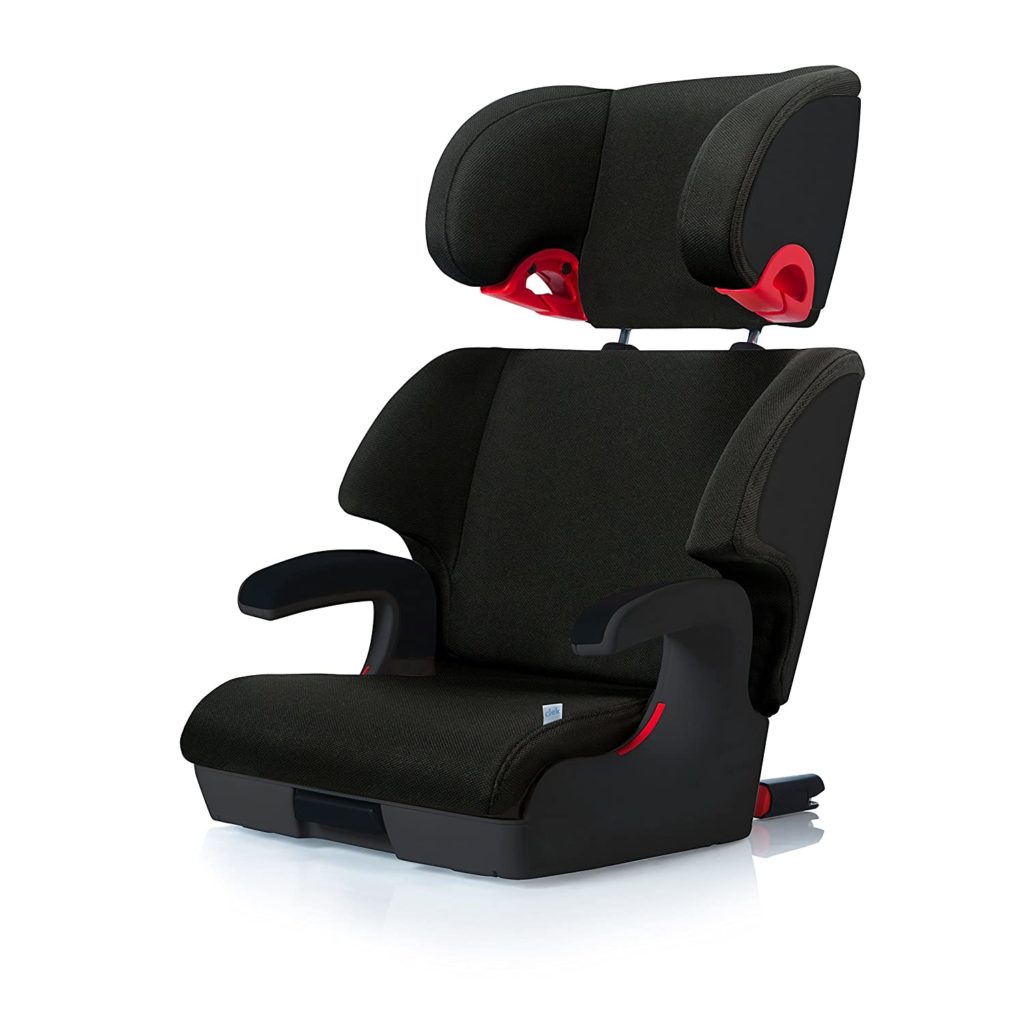Car accidents are widespread tragedies that kill hundreds of people in Oklahoma each year. While some accidents happen suddenly, there are ways you can keep you and your children safe while driving your vehicle.
As a parent, protecting your children from harm should be your top priority since they don’t have the means to take care of themselves. Young children, infants, and toddlers rely on their parents to keep them safe while traveling on the road.
Car seats are an effective way to protect small passengers from injuries and are required by law in most states. In this post, we’ll cover everything you need to know about Oklahoma child seat laws and the different types of seats you can use to protect your loved ones.

Overview of Car Seat Laws in Oklahoma
Police officers in Oklahoma can write you a ticket if you don’t properly comply with the state’s child safety laws. If an officer sees a vehicle that is non-compliant with the regulations, they have probable cause to pull the car over and write a citation.
Here’s a quick breakdown of the child restraint laws in Oklahoma:
- Children 2 and under need to be in a rear-facing seat (infant seat/convertible seat).
- Children between 2 and 4 may use a forward-facing car seat.
- Children between 4 and 7 must use a booster seat.
- Children shorter than 57-inches must use a booster seat.
- Children over 8 years old and taller than 57-inches may ride in an adult seat.
Not using a car seat or seat belt significantly increases the chance of serious injury due to an accident. As a result, Oklahoma has established harsh fines and consequences for failing to comply with the child restraint laws. The severe penalties are there to encourage people to follow the rules to help reduce vehicle-related injuries.
If an officer pulls you over and the proper car seat isn’t being used, they will have no other choice but to give you a citation. No matter the reason for breaking the law, appealing this type of ticket is extremely difficult.
Car Seat Violation Penalties
- Child safety violation is $208.
- Failure to wear a seat belt is $20.
While the child safety fines are quite strict, tickets for breaking the Oklahoma seat belt laws are relatively minimal. However, adults should still always put on their seat belt to protect themselves and anyone else traveling in the vehicle.
Exemptions
Car seat law exemptions in Oklahoma are relatively broad. For example, older cars that don’t have a passenger restraint device may not be eligible for a fine. However, it’s not safe to transport your child in these types of vehicles.
Commercial vehicles don’t necessarily require a car seat. However, you’ll need a commercial driver’s license to operate one. That said, a police officer may issue you a warning if you are transporting your child in a commercial vehicle without the proper safety restraints.
Emergencies are examples of one of the times where the laws carry with them exceptions. If your child has a medical emergency and you need to get them immediate care, the state doesn’t require you to have a car seat. However, using a car seat whenever possible is the best way to ensure their safety.
What Are the Different Types of Car Seats?
As you may know, a car seat is there to keep your child safe while transporting them in a car. The kind of car seat you need depends solely on your child’s weight, age, height, and type of vehicle. You must get the correct type of car seat for your child for it to be effective. Fortunately, most vehicles have car seat requirements in their owner’s manual.
The different types of child safety seats are:
Infant Car Seats

As the name suggests, infant child safety seats are for infants. You can use this type from the day your child is born until they are about 2-years old or until their height or weight exceeds the seat’s capacity. Infant car seats are for the rear-facing position only.
What’s more, you can also use your infant car seat as a carrier, but only in certain conditions. Most infant car seats snap directly into the vehicle seat, but you may need another component, depending on your vehicle. Please note that while these car seats can last up to 2-years, you’ll need to replace them once your child exceeds the weight/height limit for optimal safety.
Smaller infants or those that are just out of the hospital for the first time may require an infant bed to use while in the car seat.
Convertible Car Seats

Convertible car seats work similarly to infant ones. However, they aren’t typically portable. You can use a convertible car seat until your child is about 3-years old, so they are a much better investment long-term.
The only real downfall of these car seats is that they are complicated to move from one vehicle to another. That said, the seats tend to be larger and more comfortable for your child, especially during long trips.
Booster Seats

Booster seats are designed for larger children that weigh at least 30 pounds. These seats are for the forward-facing position only and may need additional components depending on your vehicle’s make and model.
What’s good about booster seats is that it’s the last car seat you’ll need for your kid. Once they outgrow the booster seat, they can sit in a regular seat like an adult. Your child should be in a booster seat until they are at least taller than 4”9, which is roughly between 9 and 10 years old.
Guide for Properly Installing a Car Seat
Although helpful, being alert on the road isn’t enough to protect you or your children from a road accident. Buying the proper car seat is the only way to protect your young from a life-threatening injury as the result of a car accident.
What’s more, you need to ensure that you install your car seat correctly. Any reputable car seat manufacturer will have clear installation instructions you can follow. If you aren’t sure if your seat is properly installed, you can visit a local inspection station for professional help.
Further Information on Car Seat and Booster Seat Laws Oklahoma
The above information is only an overview of the Oklahoma car seat laws. There are several other nitty-gritty details that we may have overlooked, so it’s best if you reach out to an authorized government official or attorney for the entire list of laws.
To learn more about car seats and safety restraints for children, contact the manufacturer for more information. They can provide you with all the details about each seat they carry and advise you on which is best for your vehicle/child. Car seat manufacturers can also tell you more about which seats are suitable for Oklahoma state laws.
Remember, always use a car seat when transporting children and use your safety belt to help protect you from a severe injury. We hope this post was helpful, and you now have all the information you need about car seat requirements in Oklahoma. If you know someone who could benefit from this information, feel free to share it with them.





